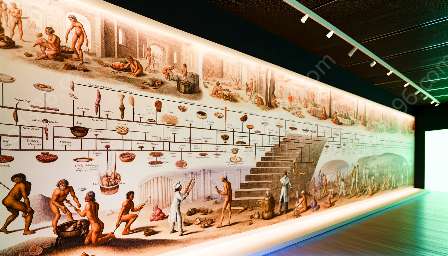Throughout history, diverse regions have developed unique cooking styles influenced by cultural, geographical, and historical factors. This article will explore the origins of these cooking styles and their evolution, as well as the relationship between culinary techniques and food culture and history.
Origins and Influences of Cooking Styles
The origins of cooking styles across regions can be traced back to ancient civilizations, where specific ingredients, cooking methods, and flavor profiles were shaped by the availability of local resources, climate, and cultural practices. For example, Mediterranean cuisine is characterized by the abundant use of olive oil, fresh vegetables, and seafood, reflecting the influence of the region's climate and proximity to the sea.
In Asia, cooking styles have been heavily influenced by the use of herbs and spices such as ginger, lemongrass, and tamarind, as well as cooking techniques like stir-frying and steaming. These flavors and methods are deeply rooted in the agricultural traditions and trade routes of the region.
Evolution of Cooking Styles
As societies developed and interacted through trade and migration, cooking styles began to evolve and integrate new ingredients and techniques. The spread of ideas and technologies led to the fusion of culinary traditions, resulting in the creation of new regional styles.
The Age of Exploration, for example, brought about the exchange of foodstuffs and culinary techniques between the Eastern and Western hemispheres, leading to the global spread of ingredients such as chili peppers, tomatoes, and potatoes. This interchange of flavors and cooking methods significantly impacted cooking styles across regions, creating a melting pot of culinary diversity.
Culinary Techniques and Innovation
The evolution of cooking styles also paralleled the development of culinary techniques and innovations. Advances in food preservation, such as salting, smoking, and pickling, enabled communities to preserve and store seasonal ingredients for consumption throughout the year, shaping the flavor profiles and cooking styles of various regions.
Additionally, the invention of kitchen tools and cookware, such as the mortar and pestle, wok, and clay oven, played a crucial role in shaping cooking styles as they enabled the preparation of specific dishes and the development of unique cooking methods.
Food Culture, History, and Identity
Food is more than sustenance; it is a reflection of cultural identity and historical heritage. Cooking styles across regions are deeply intertwined with food culture and history, serving as a living expression of traditions, rituals, and social interactions.
Through the lens of food culture and history, we can understand how cooking styles have been preserved and adapted over time, often serving as a symbol of cultural pride and continuity. Traditional cooking techniques and rituals, such as the use of communal cooking pots in African cuisine or the elaborate spice blends in Indian cuisine, showcase the enduring legacy of food culture and history within cooking styles.
Conclusion
The origins and changes in cooking styles across regions offer a captivating journey through the interconnectedness of culinary traditions, cultural influences, and historical developments. Exploring the evolution of culinary techniques and the impact of food culture and history provides a deeper appreciation for the rich tapestry of flavors and culinary diversity that has shaped the world's gastronomic landscape.

